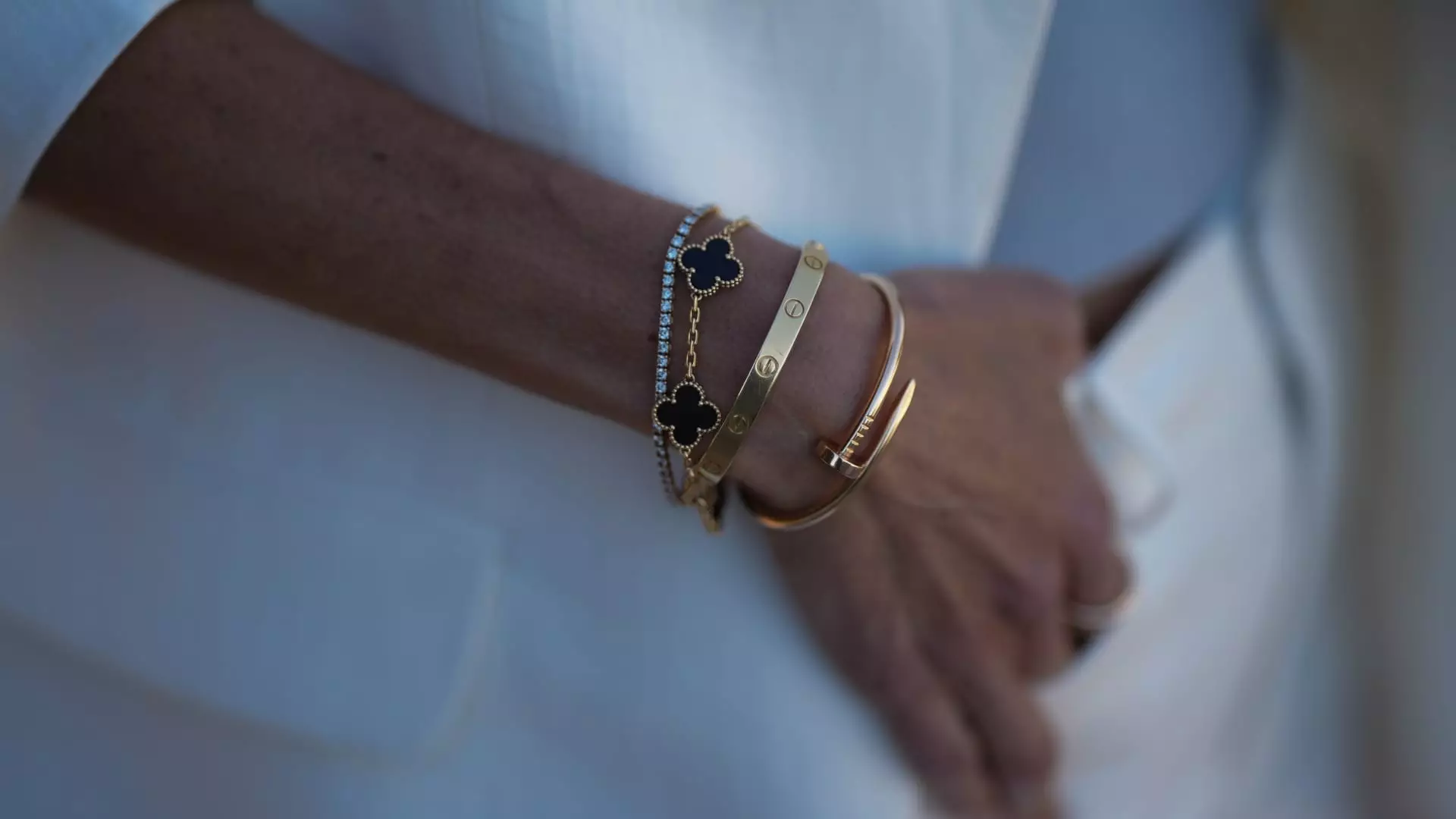For months, stakeholders in the luxury retail sector clung to an optimistic narrative: a robust rebound was imminent in 2025. After a seemingly promising fourth quarter filled with holiday cheer and post-election euphoria, expectations soared for a resurgence in consumer appetite for high-end goods. But reality has shown a starkly different picture. Data from Citigroup paints a sobering landscape: luxury credit card spending in the U.S. has actually declined in the first five months of the year compared to the same period in 2024. This isn’t a blip or a correction—it’s a clear indicator that the anticipated surge isn’t just delayed; it’s fundamentally elusive. The narrative of an imminent recovery hinges on fragile assumptions that the broader economic environment and consumer confidence are resilient enough to sustain high-end demand when, in truth, a more intricate and concerning reality is emerging.
Uneven Resilience: Jewelry Holds the Line Amid Broader Decline
Amid this disappointing backdrop, one category outshines others: luxury jewelry. Unlike leather goods or ready-to-wear apparel, jewelry has managed to maintain a semblance of growth—growing 10.1% year-over-year in May and stabilizing better than other categories. More remarkably, not only has total spend increased, but the customer base has also expanded in this segment. While some high-end jewelers have lost 2.7% of their clientele, those remaining are choosing to spend more—an 11.7% jump in average transaction size. The reasons for this resilience are not purely superficial; they are rooted in deeper market perceptions. Jewelry, often perceived as an investment, has intrinsic value thanks to precious metals and gemstones, which have appreciated significantly in recent months. As Citi analyst Thomas Chauvet notes, consumers are increasingly viewing jewelry as a “store of value”—more than mere adornment, it’s an asset that can withstand market shocks and inflation.
Luxury Handbags and Watches: The Mirage of Value
Contrasted with jewelry’s stubborn resilience, the fate of luxury handbags and watches tells a different story—one of stagnation masked as progress. Handbag prices have soared—up to 30-40% since the pandemic—yet consumers are not necessarily getting better value. These price hikes appear disconnected from innovation or authentic differentiation. The stagnation in design diversity, with most bags looking increasingly alike, underscores the stagnation in consumer excitement. The veiled assumption that price increases equate to enhanced value is flawed when buyers’ perceptions have not kept pace.
Luxury watch spending provides a mixed bag: a 14.7% increase in overall expenditure sounds promising, but a closer look reveals a different picture. Top brands have experienced a 10% decline in May alone—an indication that early gains stem from strategic inventory builds rather than genuine market expansion. A significant portion of this activity relates to short-term reactions to tariffs and supply chain pressures, not sustainable demand. The recent uptick in watch sales might be more about retailers rushing product into the U.S. market to hedge against tariffs than a sign of robust consumer enthusiasm.
Economic Factors: The Illusory Rise of American Confidence
Underlying this complex picture are macroeconomic forces that distort apparent consumer sentiment. The dollar’s decline of around 10% this year, while discouraging for international travel and foreign purchases, might seem to offer some short-term relief for luxury sellers trying to attract domestic buyers. However, this “lifeline” is merely a mirage. The broader economic picture remains volatile—tariff uncertainties loom again as the Trump-era reciprocal tariff pause approaches expiration, and geopolitical tensions like the Iran-Israel conflict threaten to destabilize markets further.
Moreover, consumer confidence, often seen as a driver of luxury sales, is surprisingly fragile. The reopening of markets and rebounding equity portfolios have been insufficient in motivating sustained buying—especially when the fundamental economic indicators point to uncertainty and risk. Luxury consumers, particularly high-net-worth individuals, are increasingly cautious, weighing the potential for geopolitical and currency shocks against their desire to splurge.
Rethinking the Luxury Consumer: More Cautious, Less Sanguine
The assumption that luxury spending will bounce back in line with earlier recoveries is flawed. High-end consumers are becoming more selective, valuing exclusivity and intrinsic worth over mere brand prestige. Jewelry’s resilience highlights this shift; it’s not about flaunting wealth but about maintaining a perception of solidity and heritage. The decline in spending on bags and accessories signals that consumers are less willing to indulge blindly, especially when many products lack meaningful differentiation or offer diminishing returns.
At the same time, luxury brands are caught in a trap: without genuine innovation or meaningful value propositions, their pricing strategies risk alienating their core clientele. Consumers now demand more than status; they seek authenticity, durability, and investment potential. If brands fail to recognize this seismic shift, their profits will continue to erode—not just because of external shocks, but because of internal misjudgments about what consumers truly value.

